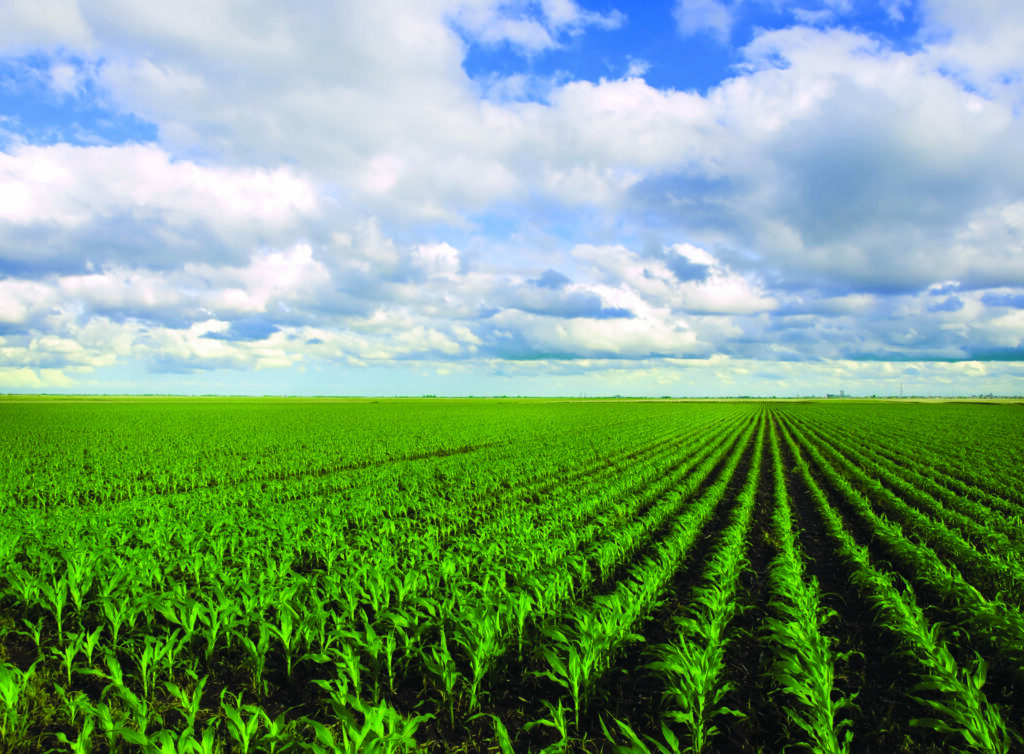As we all know, spring weather in the Midwest can be really variable. Rain, snow, and cold soils are all things we deal with during the planting season. Getting the seed in the ground under the right conditions is the first step in fulfilling yield potential, but unfortunately, there isn’t always time to wait until those conditions occur. There’s not a crop grower out there who hasn’t had to plant under less than ideal circumstances; it’s just a call that has to be made sometimes. However, there are things you can do to give your crops a head start, improve early-season vigor and increase yields. One of the most important is to ensure that adequate fertility is available for the germinating seed to cope with adverse conditions.
While you can’t control the weather, you do have some control over early season fertility. Placing fertilizer near the seed as a pop-up (in furrow) or a starter (2×2, 2×0, etc.) reduces the risk of planting in less than ideal conditions by providing readily available nutrients for early growth. Although a yield boost cannot be expected with seed-placed fertilizer every year, the benefit comes when conditions are less than ideal. Applying fertilizer with the seed every year hedges risks because conditions are unpredictable, and the crop will utilize the nutrients either way. This practice will not necessarily add costs either, because the amount of nutrients placed with the seed can simply be subtracted from the overall fertilizer budget for the crop. Splitting the fertilizer application can help improve nutrient use efficiency as well, by better syncing fertilizer application with crop needs.
The most important thing to consider when choosing a fertilizer to be placed in furrow is the quality of the product. Many fertilizers can cause injury to the seed resulting from two factors: the salt index and the production of free ammonia. As the salt index of a fertilizer increases the potential for seed injury increases as well because a high salt concentration can dehydrate the germinating seed. The production of free ammonia as a fertilizer breaks down can also be toxic to the seed. A good way to reduce the risks associated with in furrow placement is to use carbon-based fertilizer such as Midwestern BioAg’s L-CBF products such as L-CBF TerraFed™.
“Splitting the fertilizer application can help improve nutrient use efficiency.”
L-CBF Terrafed, with a 1-0-4 analysis, is a molasses product that provides the biological benefits of a simple carbon source for use on organic farms or mixed with other liquid fertilizers.
Molasses, which is a liquid form of carbon, helps to stabilize the soluble nitrogen provided, therefore reducing the risk of negative impacts on the seed. The way this stabilization works is related to the fact that microbes require a certain amount of carbon in order to utilize nitrogen in the soil. By providing this carbon source in conjunction with nitrogen, microbes are able to efficiently utilize the nitrogen, taking it up and then releasing it as they die. This turnover of the microbial biomass happens quickly and helps to keep the nitrogen not used by the plant directly from being lost as a result of ammonia volatilization or leaching. Additionally, mixing L-CBF TerraFed, with UAN 28% is an excellent way to stabilize and slow down the loss of nitrogen from that product.
In addition to nitrogen stabilization, the molasses in the L-CBF products stimulate soil biological activity. The volume of soil contacted by newly emerged roots is very small, and therefore it is critical that adequate nutrition is available in close proximity. Stimulation of the soil biology around the roots with an in furrow L-CBF application helps to unlock and cycle nutrients more rapidly. Phosphorus availability is often limited in cool soils due to its low mobility and low overall biological activity. Research has shown that the simple sugars in molasses provide an energy source for soil microbes, stimulating their activity and releasing phosphorus in the process. For these reasons, utilizing L-CBF as a seed-placed liquid carbon-based fertilizer can have many benefits. It is important to remember that starter or pop-up fertilizer is only a component of an overall biological fertility program, but giving the crop what it needs to cope with early season stress can make a big difference at the end of the year.
Can we help you with a specific soil health recommendation? Reach out to a Midwestern BioAg Consultant.

